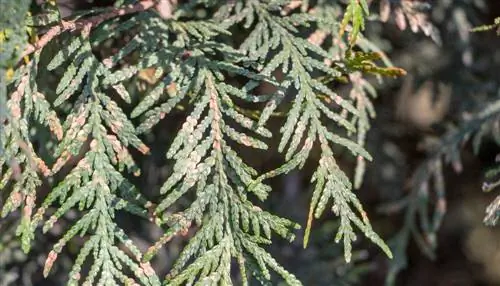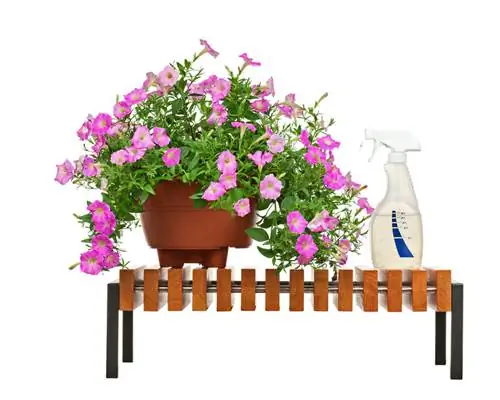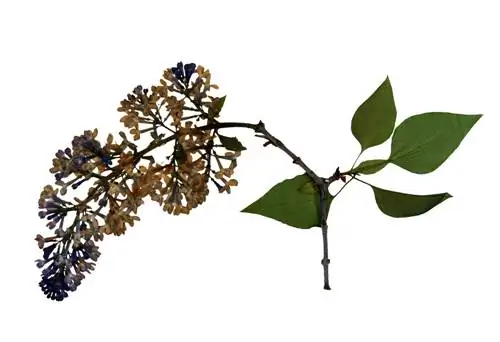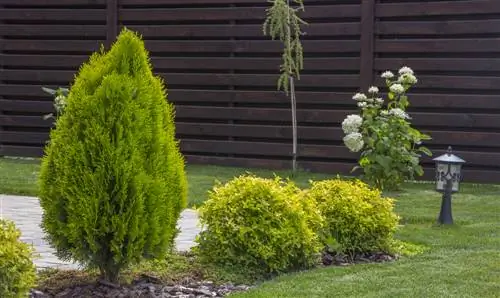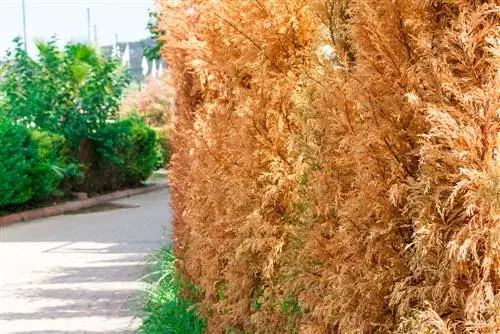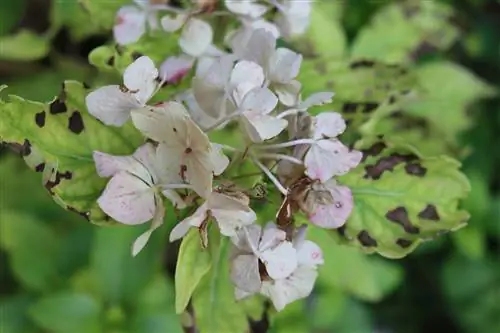- Author admin [email protected].
- Public 2023-12-16 16:46.
- Last modified 2025-01-23 11:21.
If you have a favorable location and take good care of your thuja hedge, you will hardly have to deal with pests. There is one exception, however: the leaf miner. How do you recognize these pests and what is the best way to combat them?
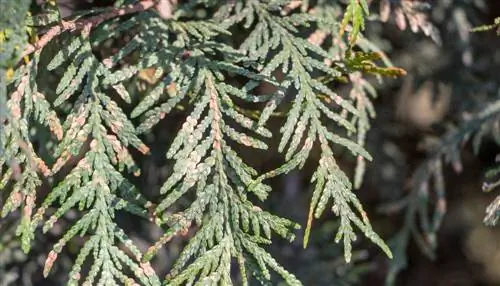
What pests occur on Thuja and how do you fight them?
The most common pest on Thuja hedges is the leaf miner. You can recognize an infestation by translucent and later brown shoots. If the infestation is mild, it is sufficient to cut off the affected shoots generously. If the infestation is severe, you will have to cut back radically and possibly treat with pesticides.
What pests can occur?
There are hardly any insects that act as pests on a tree of life. Only the leaf miner can become a real problem.
If the shoot tips of the Thuja initially become translucent and then turn brown, you should examine the tree for pests so that you can combat them in good time.
Identify and combat leaf miners on the tree of life
There are two types of leaf miners that attack the tree of life: the juniper leaf miner and the thuja leaf leaf miner. The juniper leafminer flies in May and June, while the thuja leafminer appears a little later from June to July. During these times, the pests lay their eggs on the thuja, which later develop into larvae and eat into the shoots.
Signs of leaf miner infestation:
- initially translucent, later brown shoots
- hollow inside (feeding passages)
- black dots on the tips (fecal deposits)
- small caterpillars in the tips
Fight leaf miners immediately
A he althy thuja can usually cope with a light infestation quite well. Simply cut off the affected shoots generously.
If the infestation is very severe, there is a risk that it will spread to the entire hedge and cause the arborvitae to die. In this case, you have to resort to radical pruning and, if necessary, treat the thujas twice with appropriate products from the garden supply store.
Fungal diseases occur more frequently
The death of the shoots is shown by brown tips, which, however, do not have any feeding ducts on the inside. Fungal infestation is usually caused by an unfavorable location that is too moist.
You can prevent fungal infestation by regularly thinning out the Thuja and not planting them too close together.
If possible, do not water from above as often and never in the evening, as the shoots will then no longer dry properly.
Tip
Brown tips on the thuja do not necessarily indicate a pest or fungal infestation. Sometimes they are just dried out. The tree of life needs to be watered more frequently, especially at the beginning, and waterlogging must be avoided at all costs.

